Breification B17: Will humanoid robot replaces human
It can be seen that jobs that require more human skill such as instinct, adaptability and common sense are harder to replace with machines as opposed to jobs that require less mental effort. The new jobs that will be created are going to challenge the intelligence of humans and allow us to exert our energy in mental rather than physical labour which leads me to my next point.
I believe robots will not replace humans because automation in the workforce complements human skill causing the job market to evolve into something that values furthering knowledge rather than focusing on algorithmic tasks that a robot can even do. First of all, robots are mere information processing machines and do not carry the same skill sets as humans.
The job industry has come very far today with industrial machinery and online applications that have replaced the need for human labour. For instance, assembly line work has been replaced by machines, customer service has adapted to automated response systems, and even banking has shifted to online means.
For instance, the technical feasibility of automating activities that involve operating machinery in a predictable environment is the highest at 78%. Jobs in this category include assembly line work, food preparation and packaging. On the contrary, the technical feasibility of unpredictable labour such as construction, farming, and raising animals is 25%. This is the signs that robotics is now going through a period of significant progress and change. It is very interesting to learn about robotics because it may replace humans in the future. The need for humans to do certain tasks in this day and age has objectively been reduced.
Encouraging human creativity
The jobs that do get replaced by automation will only allow humans to exert their mental energy on productive things that value creativity and problem solving, ultimately allowing the job market to expand. The job market has a big impact on what the potential employees prioritise and value in their life. If the hiring requirements of a job rely on redundant work with a lack of expectation for other skills, the employees will most likely adapt to that low mental effort and fail to live to their potential.
It can be argued that assembly line work should be replaced by robots so that humans can move on to jobs that are more meaningful to them. Automation, by removing routine work, actually makes jobs more human, enabling the role and contribution of people in work to rise in importance and value.
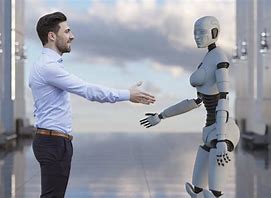 Irreplaceable strengths of humanity
Irreplaceable strengths of humanity
Furthermore, the most productive quality of humans is the inclination towards discovering knowledge and constructing theories to make sense of the world. A lack of this quality is the greatest downfall for AI. Robots are simply algorithms coded for a certain purpose. They cannot create knowledge, present theories, or find solutions to specific problems.
The goal is to create systems that let humans combine what they are good at — asking the right questions and interpreting the results — with what machines are good at: computation, analysis, and statistics using large datasets.
Role of AI
The real purpose of AI in the workforce is going to be to augment it and reframe human work so that it can ultimately allow us to embrace the qualities we have that cannot be found in robots. The only condition for humans to still be active contributors in the job market is for organisations to value knowledge over tedious redundant tasks. This presents as a productive trade-off when tedious jobs do get replaced since the knowledge and capability gaps are simultaneously being reduced.
Combining the strengths of robots with the strengths of humans will allow automation to help us in the workplace rather than make us paranoid about losing our jobs. It will create efficiency in organisations without increasing unemployment or losing profits. It is crucial to understand that robots can interpret and learn things but can never beat the ultimate human mind.
What Are The Components of Humanoid Robots?
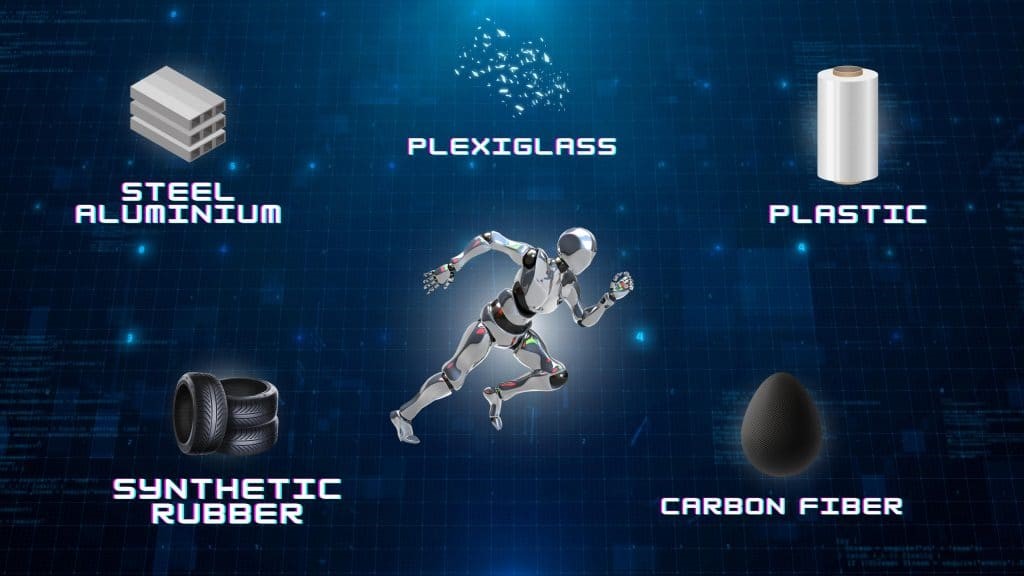
The construction of a robot requires the use of a variety of materials. The following are the most common materials that are used to create humanoid robots. The selection of materials relies directly on the unique functions and working circumstances of a robot. The harsher the environment that a robot will be operating in, the stronger and more resistant to the use of the materials should be. The most important thing to remember is that sensors play a crucial part in giving the robot human-like behavior. The usage of sensors in robots has pushed their ingenuity to greater levels.
Various Types of Sensors Employed in Humanoid Robots
- Proprioceptive Sensors: for detecting position, velocity, and orientation
- Proximity Sensor: for recognizing the near location of things
- Range Sensor: for determining distances
- Tilt sensors: for quantifying tendency
- Accelerometers: for determining the velocity
5 Most Famous Humanoid Robots
1. Romeo
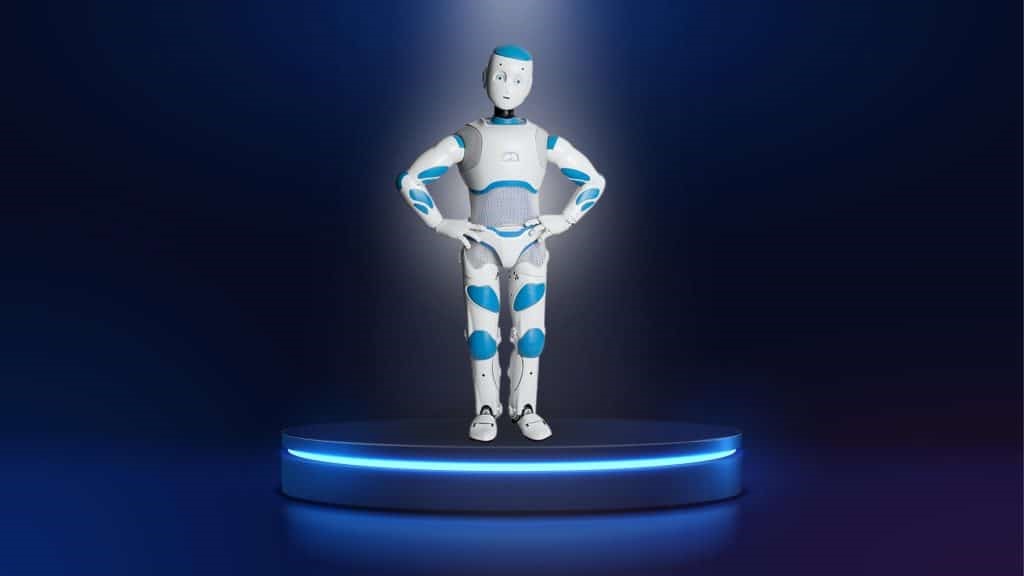
Romeo is a 143 cm tall plastic and metal figure with a lovely face. This humanoid robot is still in the process of being developed and improved. Romeo is completely adaptable to the needs of the user. The objective of creating this robot is to assist people who need physical assistance.
2. Sophia

Sophia is an extremely sophisticated humanoid robot that was launched in 2016. It is created to simulate human social behavior and emotions. She is a robot that can duplicate over 60 distinct human emotions. She can easily engage with humans and has already presented several public interviews.
3. NAO Evolution
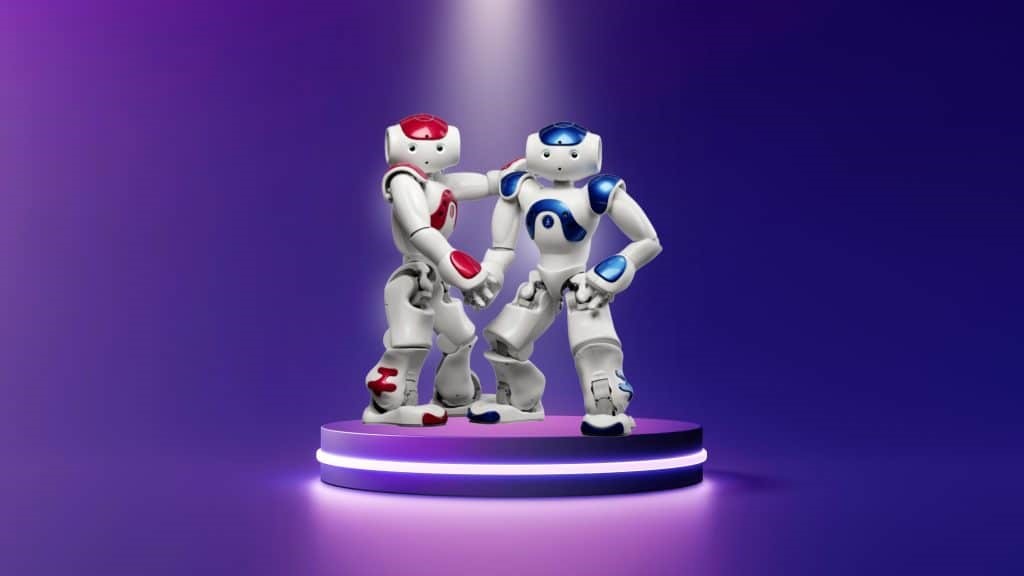
It was first introduced to the public in 2014. It was created by the French firm Aldebaran Robotics. This 58-centimeter-tall robot has 25 degrees of freedom (DOF). It is filled with extremely different sorts of sensors such as touch sensors, sonar sensors, and pressure sensors. Importantly, its cameras and other typical equipment enable it to perform incredibly complicated movements and jobs.
4. Pepper
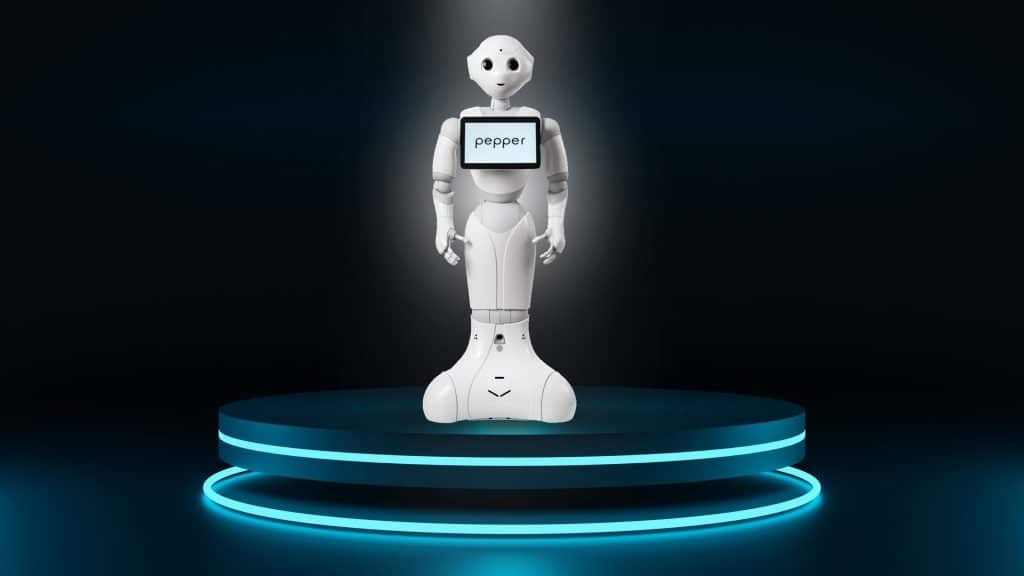
Pepper is a humanoid robot with a lovely face. It was built by Aldebaran in conjunction with the Japanese communications company SoftBank. It is only capable of low levels of technological sophistication. The reason is because it is intended to provide high levels of human communication. The robot is installed with a powerful cloud-backed voice recognition engine. It is able to recognize not just words, but also expressions, tone, and minor differences in the human voice. This gives Pepper the ability to communicate with humans in ways that were previously impossible. Moreover, it is equipped with 25 sensors and cameras.
5. UBTECH Alpha 1S
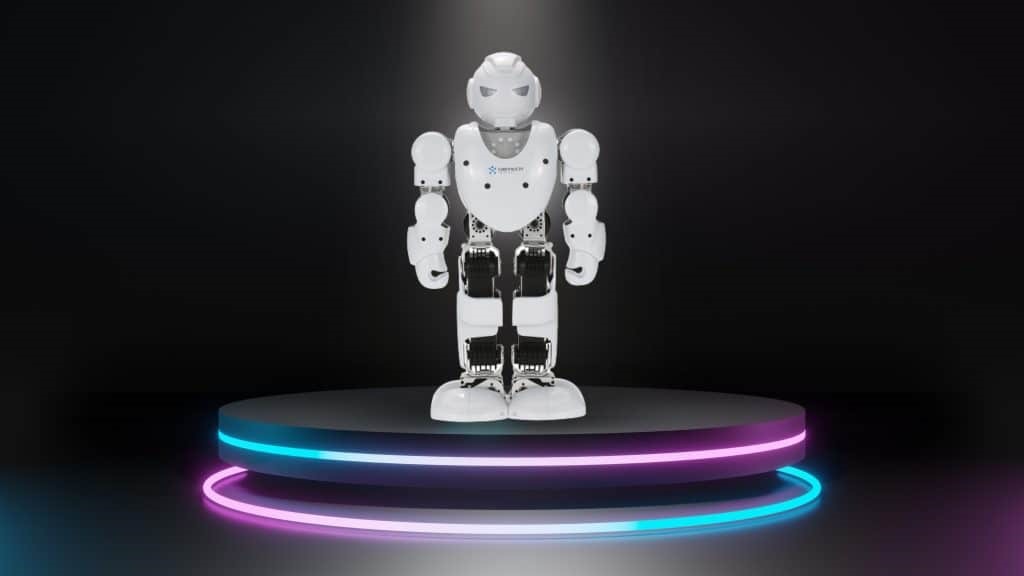
UBTECH Alpha 1S is able to display motions from a variety of performances. The examples are yoga, aerobics, kung fu, and dance. It has a remarkable degree of flexibility. Thus, it can move quite similarly to a human. Bluetooth 4.0 allows for the simple operation of the Alpha 1S when coupled with either the Android Operating System or Apple’s iOS software.
The Future of Humanoid Robots
A few years ago, humanoid robots were largely utilized in the automotive business. However, today they can be found in a wide range of industries, from healthcare to transportation, and even enjoyment. However, according to the rapid development of technology, we may foresee a future where humanoid robots may completely replace humans.
They would be able to drive us home, assist with housework, make meals, and help youngsters put on their clothing. Thus, the desire for these humanoids has increased. Finally, humanoid robots can be a game-changer in the same way as autonomous automobiles, electric cars, flying cars, and 5G technology has been in the recent past. Finally, it will lead to an increase in the number of robots. Importantly, robots in the future may be completely different from anything that we have seen up to this moment.
FAQs (Frequently Asked Questions)
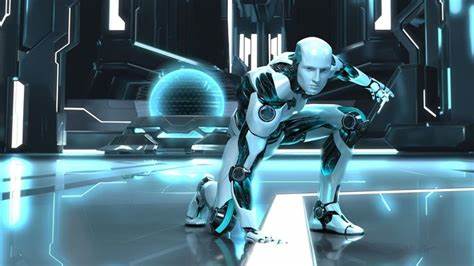
Can humanoid robots replace humans?
The future of jobs is bleak as humans are being replaced by machines. As technological advances in automation, engineering, energy storage, artificial intelligence and machine learning converge, the robotics revolution is fast becoming a reality.
Can robots replace humans Elon Musk?
The goal of the robot is to replace people who are boring or repetitive. The creation of a humanoid robot to replace humans in work is a concept that has never been done before. There was a time when science fiction imagined a Tin Man from the Wizard of Oz as a robot.
Can robots replace doctors?
Technology can be used to improve the quality of decision making. Technology can’t replace what it is to be a doctor and the important patient-physician relationship that is unique to each person.
What could never be replaced by technology?
It is not possible to fax a pillow fight. You don’t have to slow dance online. It’s not possible to have coffee with a website. It’s not possible to smell homemade bread on a pager.
Will robots replace humans one day?
The first finding is that Robots will not replace humans. In fifteen years, artificial intelligence will greatly speed up the decision-making process and make workers more productive, according to a majority of those surveyed.
Can robots have feelings?
Cynthia Breazeal and colleagues at the Massachusetts Institute of Technology have created a robot that can move its eyes and lips. The range of emotional expressions available to Kismet is limited, but they are convincing enough to make people feel sympathy for him.
What happens if robots replace humans?
A lot of jobs would be lost if humans were replaced by machines. Changing our way to remunerate people is something we should do. If you couldn’t find a job, then you should get a decent salary.
What do humans have that robots don t?
The ability to form new and valuable ideas such as poetry, music, recipes, jokes, fashion design or scientific theories is what makes humans unique. Technology can combine old ideas with new ones, but it doesn’t make sense or have value.
Does Tesla use robotics?
Similar to a billionaire-owned business, Tesla uses mobile robots for internal logistics, part transfer, and inventory management. Self-guided indoor vehicles are available for small parts.
What did Elon Musk say about robot?
According to Musk, the company’s goal is the most important thing it is working on. At its Artificial Intelligence Day last year, the electric vehicle manufacturer announced its plans for a robot.
Will robots replace soldiers?
The Army’s chief of staff said that automation doesn’t mean that soldiers will be replaced by machines, but that they will be working alongside them in future conflicts. The future defense budgets are going to be flat, according to Gen. James McConville.
Is human or AI better?
Compared to humans, these applications have higher speed of execution, higher operational ability and accuracy, as well as being more significant in tedious and monotonous jobs. Human intelligence is related to adaptive learning.
Will robots take over the world?
There are fears that machines will replace humans as the top intelligence on the planet, but it seems unlikely. According to the business network, up to 30% of jobs could be automated by the mid-20th century.
What Year Will robots replace humans?
Artificial intelligence is taking over the world and we have been warned about it for a long time. Up to 30% of jobs could be automated by the mid-2030s according to a report by the accounting firm. 40% of the world’s workers could be replaced by machines in 15 to 25 years, according to CBS News.
Why are robots better than humans?
More accurate and high quality work can be done by robot. Humans androbots are more precise than each other. They can produce more in less time. It is possible to work at a constant speed with no breaks or holidays.
Why are robots emotionless?
The theory is that robots will not have human emotions because they won’t have human bodies. The complexity of the signals that people get from all of their organs makes it unlikely that a simulation could be done.
What would happen if robots took over jobs?
Being out of work causes distress because of seven unmet psychological needs, the most important being collective purpose: work makes our lives meaningful. The suggestion is that robot unemployment would make us miserable.
Who is smarter human or robot?
Artificial intelligence can be used to determine better outcomes than human decision matrices. The ability to identify complex patterns is what makes this possible. Artificial intelligence is limited in its ability to do complex thinking. That’s right, artificial intelligence is not as smart as humans.
Can robots be considered alive?
In order for a robot to be considered alive, it needs to be driven by its own interests. This understanding of a living machine can be seen in the descriptions of living robot in science fiction.
What can humans do that AI can’t?
People in jobs that are at risk should be warned and encouraged to improve their skills. Strategy, creativity, empathy-based social skills, and dexterity are some of the skills that can’t be mastered by artificial intelligence.
How much would the Tesla Bot cost?
There isn’t a price tag on a TeslaBot at the moment. The robot could cost as much as $10,000. A lot of people will be able to afford ten thousand dollars.






